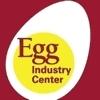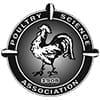Explore all the information on
Poultry management
Poultry management usually refers to the husbandry practices or production techniques that help to maximize the efficiency of production. Sound management practices are very essential to optimize production. Scientific poultry management aims at maximizing returns with minimum investment. A carefully controlled environment that avoids crowding, chilling, overheating, or frightening is almost universal in poultry farming. Cannibalism, which expresses itself as toe picking, feather picking, and tail picking, is controlled by debeaking at one day of age and by other management practices. The feeding, watering, egg gathering, and cleaning operations are highly mechanized. Birds are usually housed in wire cages with two or three animals per cage, depending on the species and breed, and three or four tiers of cages superposed to save space. Cages for egg-laying birds have been found to increase production, lower mortality, reduce cannibalism, lower feeding requirements, reduce diseases and parasites, improve culling, and reduce both space and labour requirements.
Recently we successfully analyze GHG emissions from poultry chicken excreta using the Gas analyzer.
1-5 grams of excreta is sufficient to analyze N2O, CH4, CO2, NH3 emissions from poultry excreta
Equipment: G2508 gas concentration analyzer...
Comments : 0
Recommendations: 0
The house has been preheated for 36 hours to 92°F. The chicks will be arriving in a few hours and the controller’s six temperature sensors (positioned one foot above the floor) indicate the air temperature is between 91 and 92°F (Figure 2). A thermal image indicates the floor temperature is between 87 and 102°F...
Comments : 0
Recommendations: 6
Introduction Animal welfare has been increasingly included in business agreements and with humane slaughter is a key area of interest (von Keyserlingk and Hötzel, 2015). Retailers, restaurants, and food service companies seek kinder and more responsible farm animal practices (Grandin, 2010; Bayvel et al., 2012). Yet, it is a consensus that changes in attitudes and practices of stakeholders are required to improve farm animal welfare at slaughter (Paranhos da Costa et al.,...
Comments : 0
Recommendations: 0
Recently a study was conducted on commercial broiler farms examining broiler water usage over the first seven days of a growout. High-accuracy, ultrasonic water meters were installed in twenty-two broiler houses (18, 40' X 500' houses, four 54' X 500' houses) on nine farms. The water meters were capable of accurately measuring water...
Comments : 0
Recommendations: 1
Getting chicks off to a good start is very important to overall flock performance. At no time does a bird grow faster than during the first week of its life. Over the last week of a 42-day-old flock, a bird’s weight will increase by approximately a third. In contrast, a chick’s weight will typically increase approximately...
Comments : 0
Recommendations: 0
Though there is a wide range of opinions on the optimal drinking water temperature for young chicks, the fact is farm managers actually have a very limited ability to control the temperature of the water their chicks are drinking because, for all practical purposes, it is determined by house air temperature. If the air temperature is 90°F, the water will be around 90°F. If the air temperature is 80°F, the water temperature will be around 80°F, regardless of what temperature...
Comments : 1
Recommendations: 0
Why do we, for the most part, give our chicks 24 hours of light during brooding? Do chicks actually benefit from being able to eat and drink at 2 am? Though it is widely believed that 24 hours of light is essential to maximizing chick performance and health, preliminary trails have found no significant benefit in doing so. Numerous...
Comments : 26
Recommendations: 7
I. INTRODUCTION The recognition in the late 1960’s that excessive growth rates in broiler breeders were negatively impacting rate of lay and increasing production of unsettable eggs (Jaap and Muir, 1968) has been one of the most transformative events in the history of the hatching egg industry. The resultant feed restriction programs during rearing resolved the issue at the time. But continued genetic progress resulted in feed restriction being necessary throughout...
Comments : 0
Recommendations: 0
I. INTRODUCTION The transition in the layer industry from conventional cages to cage-free and even further into free-range production is rewriting the nutritional requirements of the laying hen. In the last 25 years, the number of eggs a hen can produce has increased by about 2 eggs each year while the amount of feed required to produce these eggs has been reduced by 18.6% in cages (Anderson, 1991; Anderson et al., 2013, Anderson, 2019). The result has been a high value...
Comments : 0
Recommendations: 0
...
Comments : 2
Recommendations: 1
Confirmed Invited Speakers
To view all of the speaker information visit the website:
https://www.apss2023.com.au/
• Dr. Aaron Cowieson
• Dr. Stuart Wilkinson
• Prof. Alex Yitbarek
• Prof. Brent Kaiser
• Dr. Rick Kleyn
• Prof. Martin Zuidhof
• Dr. Wendy Muir
• Dr. Peter Chrystal
• Prof....
Comments : 0
Recommendations: 1
INTRODUCTION Birds may be exposed to a variety of potential stressors during preslaughter. The adverse effects of these factors and their combinations may range from mild discomfort to death (Petracci et al., 2006). One such factor is feed withdrawal prior to transport to the slaughterhouse (Petracci et al., 2010). Feed is withdrawn from poultry prior to slaughter to reduce the potential of carcass contamination with crop and intestinal contents (Bilgili, 2002). However, when...
Comments : 0
Recommendations: 1
This newsletter provides an overview of potential flock predators, how to identify the predator, and approaches to avoid predation in your free-range poultry flock. Predation is a common risk for poultry that are allowed to roam freely outdoors. Predator types may differ depending on the region. Therefore, this newsletter may not cover all...
Comments : 1
Recommendations: 0
Sara Orlowski (University of Arkansas) talks to Sam Shafer (PSA) about her research. She is studying several generations of broilers and has been working to select the desirable traits that contribute to a low water conversion ratio (LWCR), making the bird more water efficient. Let's Squawk About It is a monthly interview segment by the Poultry Science Association....
Comments : 0
Recommendations: 2
Chanelle Taylor (Cargill) talks to Sam Shafer (PSA) about Highly Pathogenic Avian Influenza (HPAI) and how it has severely impacted the poultry industry's birds, products, and the mental health of workers. Let's Squawk About It is a monthly interview segment by the Poultry Science Association....
Comments : 0
Recommendations: 0
Kevin Downs (Middle Tennessee State University) and Joseph Gulizia (Auburn University) talk with Sam Shafer (PSA) about the results of providing poultry with different colored feed and how that impacts the birds' feeding preferences. They also discuss what this study means for further research on this topic. This is a follow-up from a previous episode regarding the findings of this study....
Comments : 0
Recommendations: 3
There has been a lot of talk and discussions on the benefits of reducing or completely removing the use of antibiotics in livestock, particularly in poultry and swine, here in Asia and yet, so far, only a few countries have implemented regulations. As many antimicrobials are used in the livestock sector, studies have suggested that antimicrobial resistance (AMR) may be widely prevalent. Regulation on antimicrobial use is either weak or non-existent, complicated by sub-optimal enforcement and...
Comments : 0
Recommendations: 3
There is a serious under appreciation for the severity by which darkling beetles (Alphitobius diaperinus) imperil the poultry industry. Egg, broiler, and turkey producers are coming to the realization that darkling beetles in many areas of the United States are the greatest vector for transmitting avian diseases. For many years there was an on-going whimsical debate among poultry producers as to whether darkling...
Comments : 16
Recommendations: 0
Does high humidity affect the performance of exhaust fans? Yes, but probably not as much as you think and not in the way you may believe. Most people believe that humid air is heavier than dry air. After all, humid air has more moisture in it and therefore should weigh more than air that contains less moisture. But, in actuality, humid air...
Comments : 0
Recommendations: 2
INTRODUCTION Brazilian poultry industry is highly relevant for the country economy. In 2016 a total of 13 million tons of broiler meat was produced, and nearly 35% was exported. (ABPA, 2017). Broiler production is carried out in several variations of house design. However, most of the production in the integrated system is done in open-sided houses with lateral polypropylene curtains, and with solar orientation East-West. The inside cooling is a combination of natural and forced...
Comments : 0
Recommendations: 0







.jpg&w=3840&q=75)










.jpg&w=3840&q=75)













